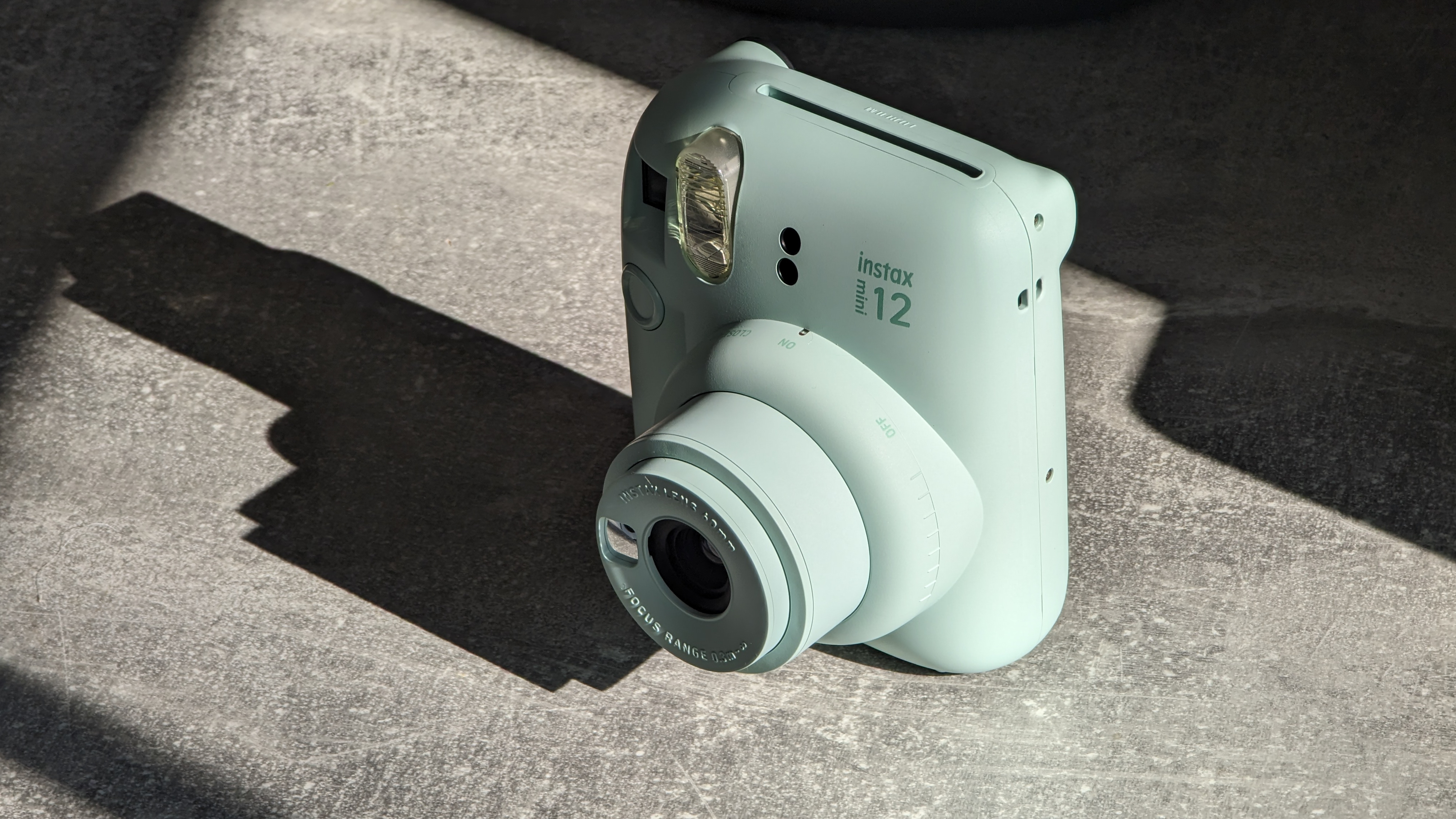
We have Fujifilm to thank for the Phoenix-like resurrection of instant photography. While it was enormously popular in the Eighties and Nineties, the medium almost joined the dinosaurs when the digital camera-shaped comet appeared (followed by the smartphone-shaped asteroid). Thankfully, between nostalgic millennials and social media-savvy Gen Zers, it's made a comeback – and the Instax Mini 12 is laying claim to the best instant camera throne.
We've now seen several generations of the Instax Mini (with the previous iteration, the Instax Mini 11, launching back in 2020) and they're increasingly a case of refinement rather than revolution. You can check out my Instax Mini 12 vs 11 guide to see what's new here – and it's also worth noting that, since the Mini 12 launched in March 2023, the more advanced (and more expensive) Instax Mini 99 has been released.
Still, the Instax Mini 12 continues the line's tradition of affordability, ease of use and, most of all, fun. if you love the art of photography, there is no experience quite as joyful as watching your instant photo reveal itself slowly before your very eyes.
At a very affordable introductory price, this camera falls into the impulse purchase category rather than a must-have – but in terms of bang for buck, instant cameras can provide a lot of enjoyment. So how does the Instax Mini 12 perform?
Instax Mini 12: Specifications
Film type: Fujifilm Instax Mini instant film
Lens: 60mm
Closest focusing: 0.5m (0.3m in selfie mode)
Shutter speeds: 1/2sec - 1/250sec
Film developing time: 90 secs
Print size: 54×86mm (2.1 in × 3.4 in)
Printed image size: 62x46mm (1.8 in × 2.4 in)
Prints per film pack: 10
Power: 2x AA batteries
Dimensions: 104 x 66.6 x 122mm
Weight: 306g (without batteries, strap, and film)
Available colors: Blossom Pink, Clay White, Lilac Purple, Pastel Blue, Mint Green
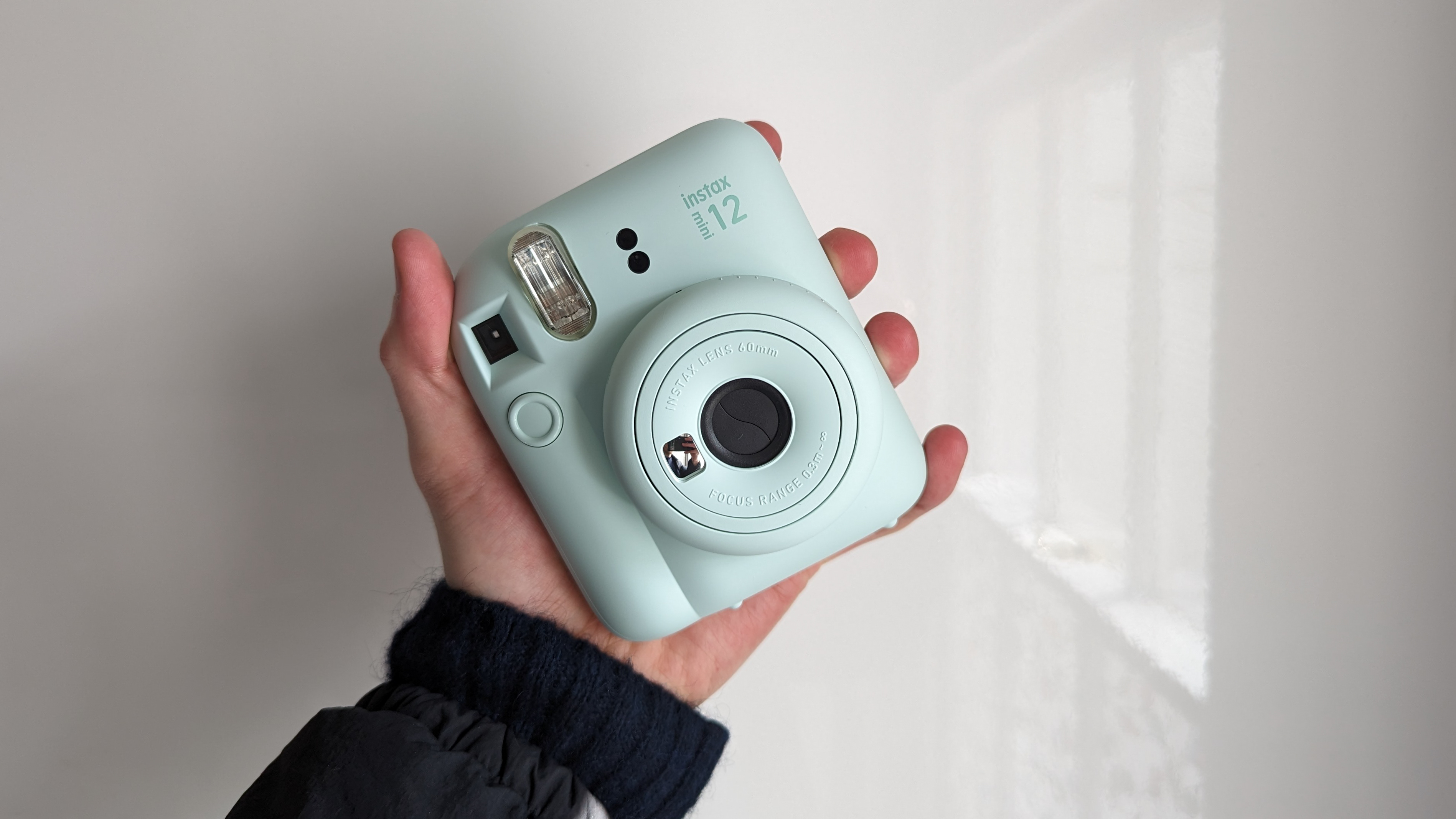
Instax Mini 12: Key features
The headline new feature of the Instax Mini 12 is the new lens mechanism for powering on and off the camera, as well as entering the camera's 'close-up' photography mode. Instead of the old pushbutton lens release, the new lens now smoothly twists to open the shutter and power up the camera in motion. An additional little twist pops the camera a little further out for 'close-up' mode for selfies and macro photography.
A lot of the hallmarks of previous Instax Mini cameras are still present, including the small selfie mirror present on the front of the lens for lining up selfies and group shots perfectly. The camera has a 60mm lens, which is a flattering perspective for portraits which are the main focus of this camera.
Fujifilm has also claimed to have improved the Instax Mini 12's auto exposure mode, improving the consistency in how images are lit and hopefully reducing wasted shots. The flash is automatic, cannot be disabled, and will fire for every photo even in bright light as a fill flash. Although, with the camera's small aperture not letting in a lot of ambient light, it is good to have some backup lighting power.
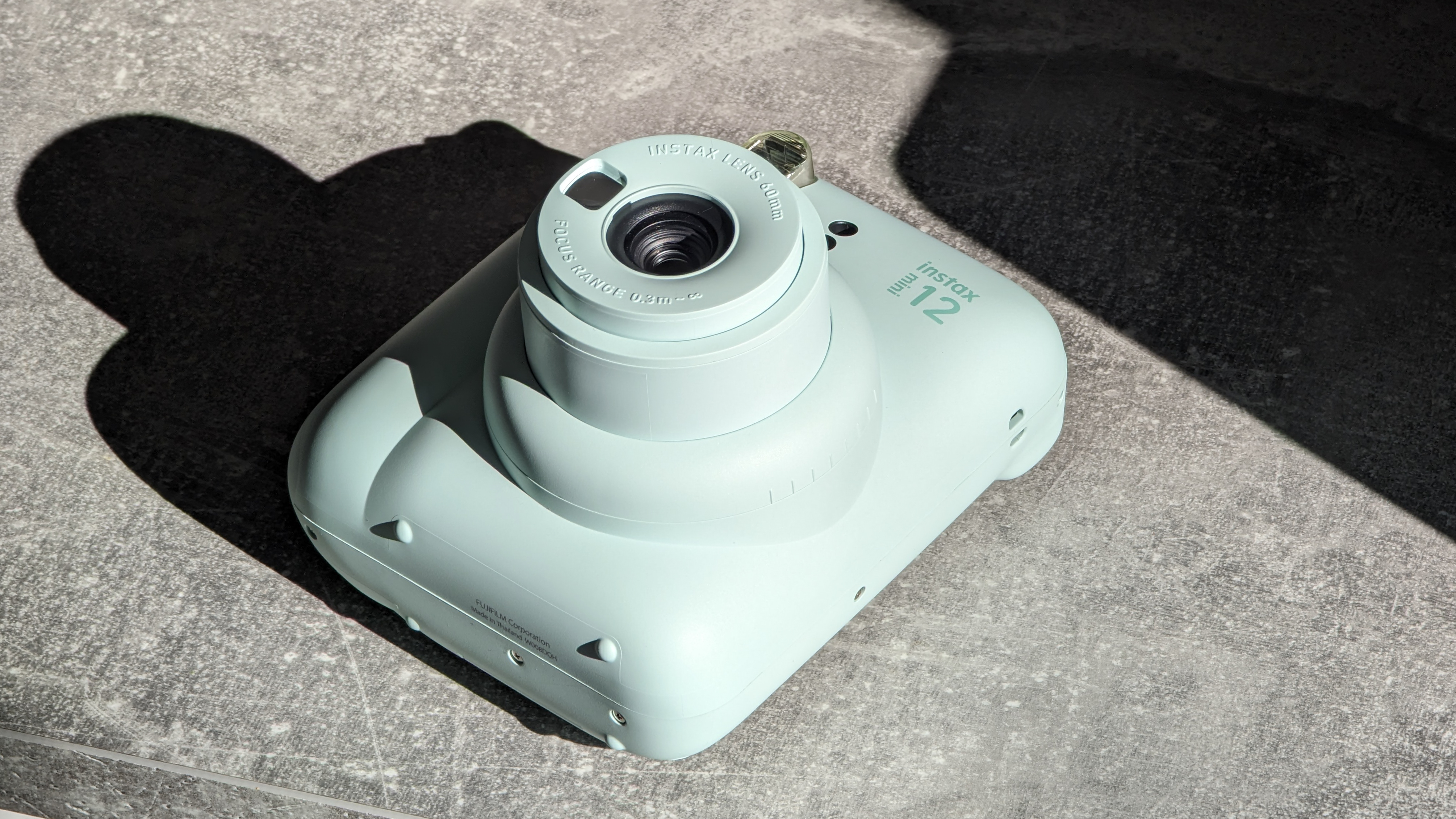
The camera features a new and improved design, coming in at slightly smaller than the previous model and adopting a more svelt bubble-like design, with a narrow hand grip and a more rounded shape.
The Instax Mini 12 still has young influencer appeal, and might not be suited to everybody, with a series of pastel shades including Blossom Pink, Clay White, Lilac Purple, Pastel Blue, and Mint Green. The last of which is the color of our review sample. For those who prefer a more conservative-looking instant camera, Fujifilm still produces the Instax Mini 40.
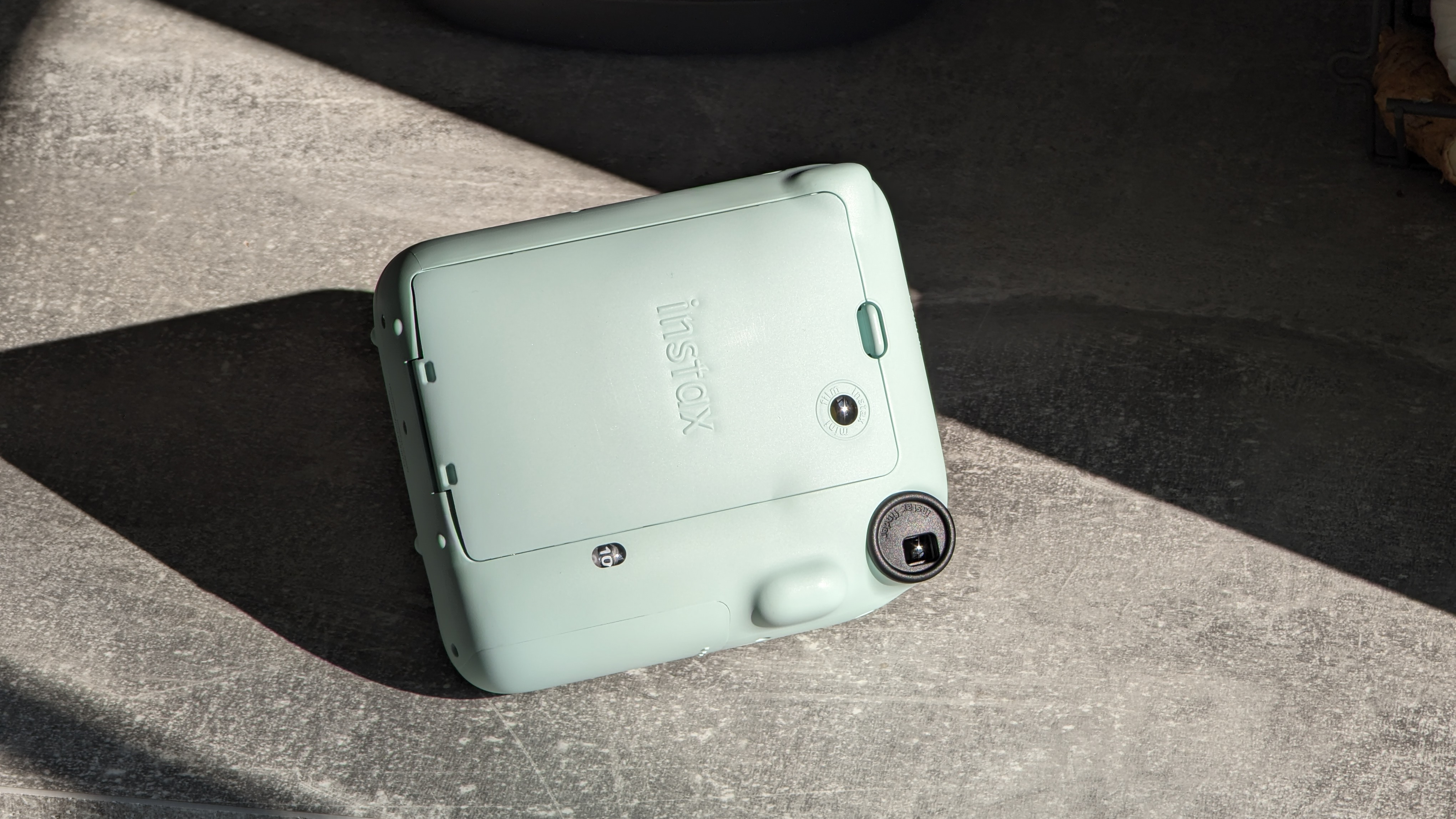
Instax Mini 12: Build and handling
No one is going to be fooled into thinking this is a premium camera, with a big playful plastic-y body, this camera looks like a toy, but fortunately, it is priced to match. Not to say the Instax Mini is not well built though, the camera feels sturdy in its construction, and the new lens twist mechanism feels secure with some longevity. The Instax Mini 12 is exceptionally light, making it effortless to carry, and while still a substantial size, is smaller than before.
When taking a photo, the camera makes a lot of clicks and whirs, including quite a thump from the back door housing the film. These are all a little surprising until you get used to them, but after running a few packs of film through the Instax Mini 12, there have been no issues with functionality.
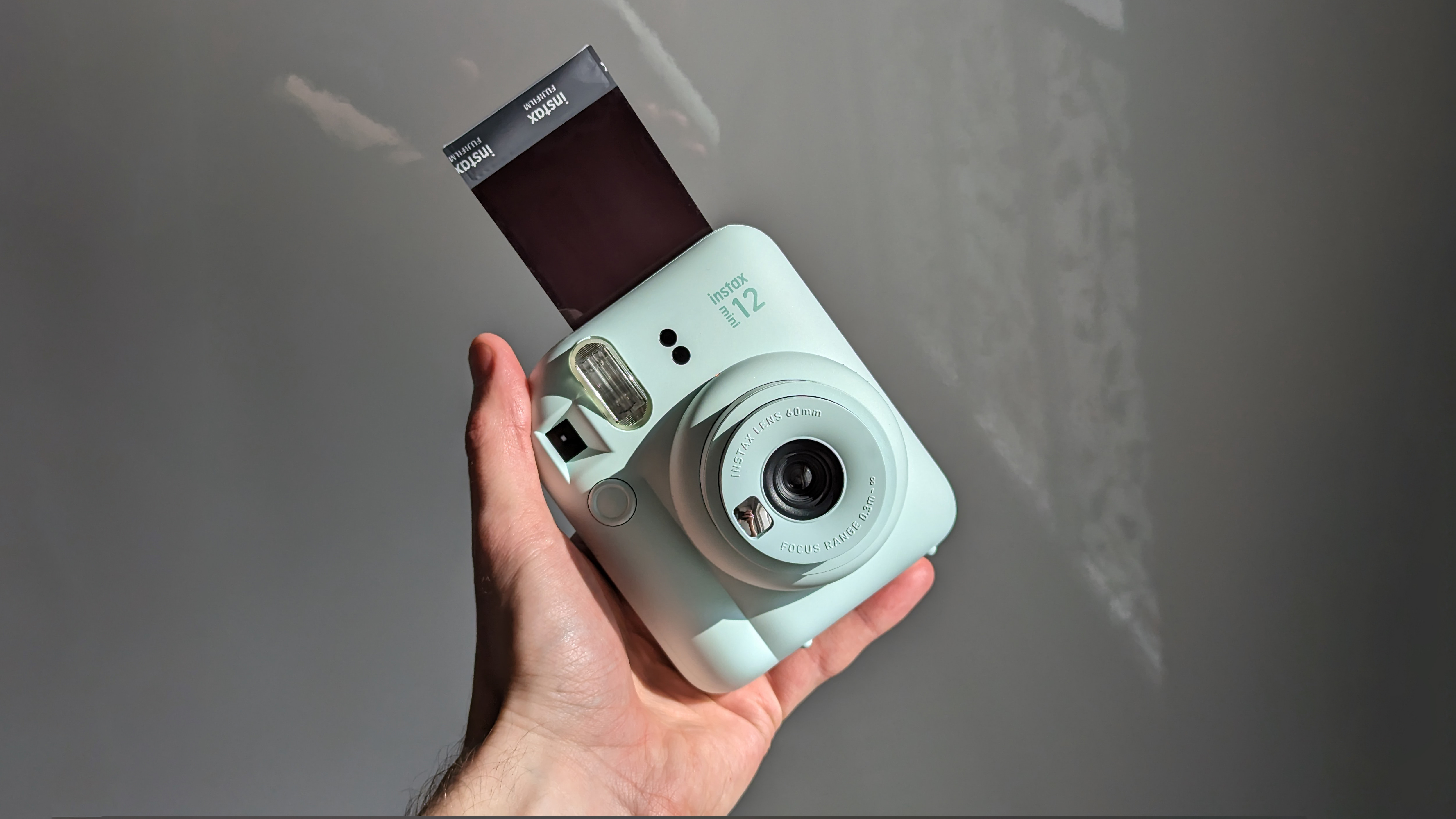
Powered by two regular AA alkaline batteries (included) that slot into the battery compartment on the side of the camera. These batteries power the auto-exposure and film ejection mechanisms. The batteries on Instax cameras seem to go on and on based on previous models, so don't worry about buying any spares.
The film packs load in the same simple fashion as the Instax Mini 11 and other Instax cameras. Just open the back cover, line up the yellow line on the camera and on the film pack, and push the door firmly closed. The first photo taken will eject the film pack cover, and then you are ready to shoot. It really couldn't be simpler. Instax Mini film packs contain 10 shots per pack before it needs replacing, and there is a countdown to the side of the film loading door letting you know how many shots you have remaining.

Instax Mini 12: Performance
What else is there to say about Instax Mini film, if you like the look, then you are going to love this camera. Instax Mini film is imperfect with lots of contrast and some questionable sharpness, but image quality comes second to the real charm of this camera with its fun-filled minute-and-a-half wait for instant photo gratification.
Next to the Mini 99, the Instax Mini 12 is the most refined version of the Instax Mini yet with nearly all our test shots coming out very well. The auto exposure seems to do a very good job of balancing the flash with the available light in most circumstances. Again, it would be great to be able to manually disable the flash when it is not needed, but that is a minor quibble.
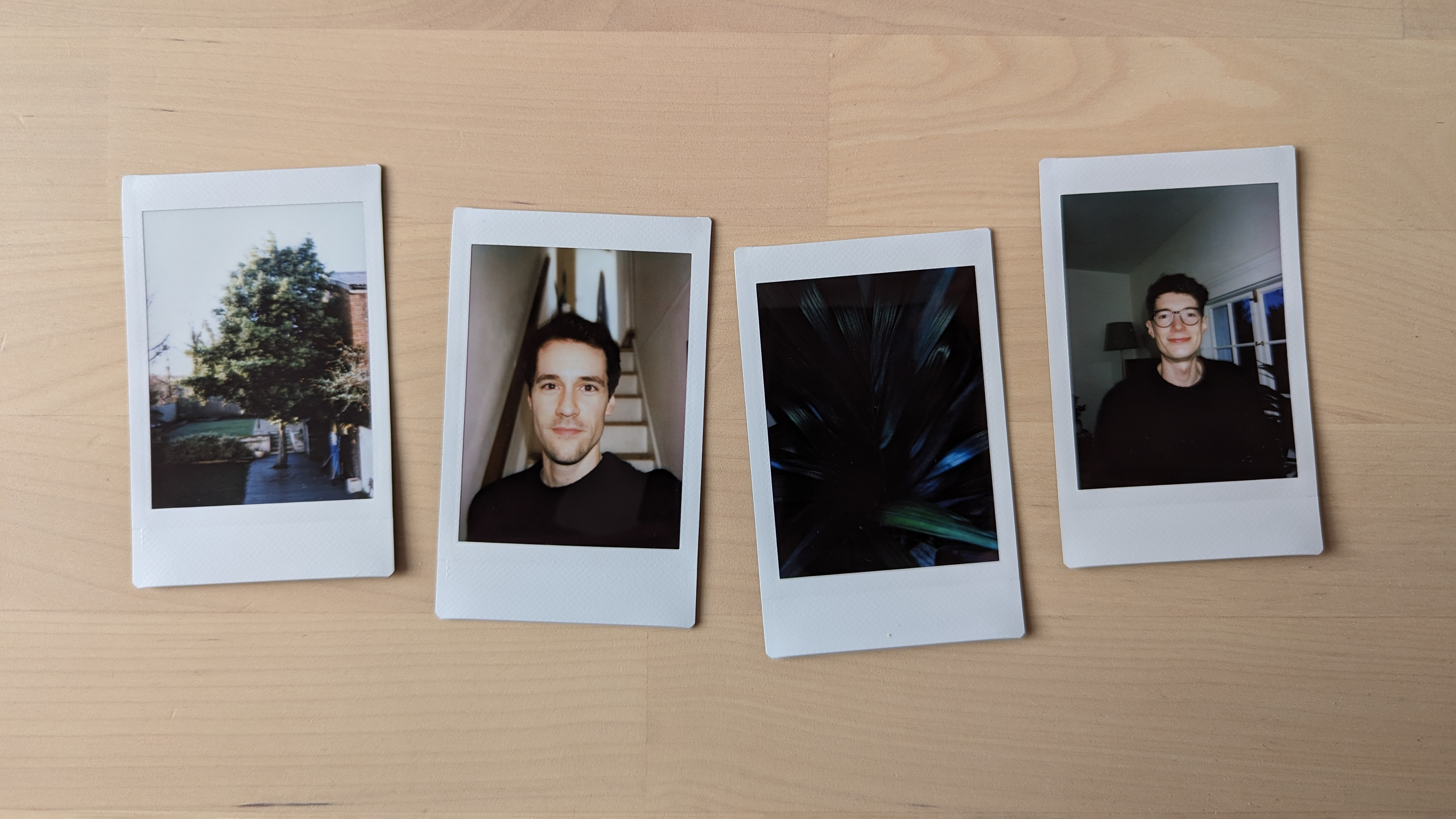
In a couple of images, it did struggle, an outside portrait in bright evening sunlight overexposed my skin quite substantially, and some inside shots when trying to use the 'close-up' mode came out a lot darker than I would have liked, especially as there was good available light and the camera flash. Fujifilm's work on parallax correction seems to have paid off, as all photos taken in 'close-up' mode were easy to frame and the focus was accurate.
As always with Instax cameras, the print is ejected from the top of the camera immediately, and unlike Polarioids you don't need to rush to block any additional light exposing the photo in unwanted ways, with exposure 'locked' before it comes out of the camera.
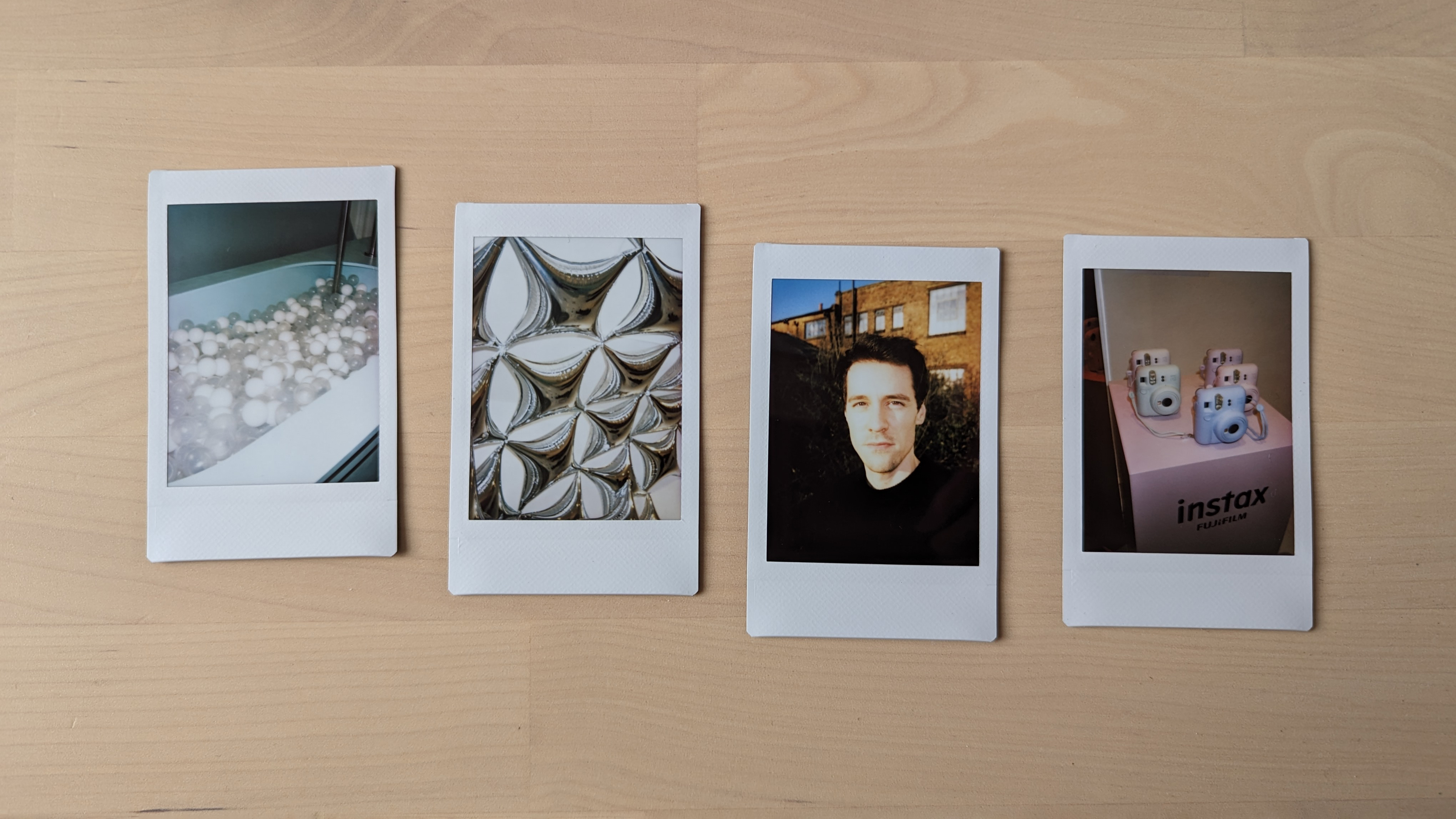
Instax Mini 12: Verdict
If you have social media then you have probably seen Instax prints going around and know exactly what to expect. Instax photos are not perfect, they have their quirks and flaws, but if you want retro credit card-sized instant photo prints with typical Instax character, then the Instax Mini 12 is now the best and most affordable way to get them.
In fact, in side-by-side testing, it produced images on par with the Mini 99. So while it obviously lacks the additional creative functions of its newer sibling, in terms of image quality you're not losing anything here.
Not just perfect not just for social media, it's also ideal for capturing memories and life unfolding around you in a simple, fun and unique way. Not knowing how photos are going to turn out and watching them develop in front of you offers endless enjoyment, and the Instax Mini 12 is some of the most fun you can have with a camera.
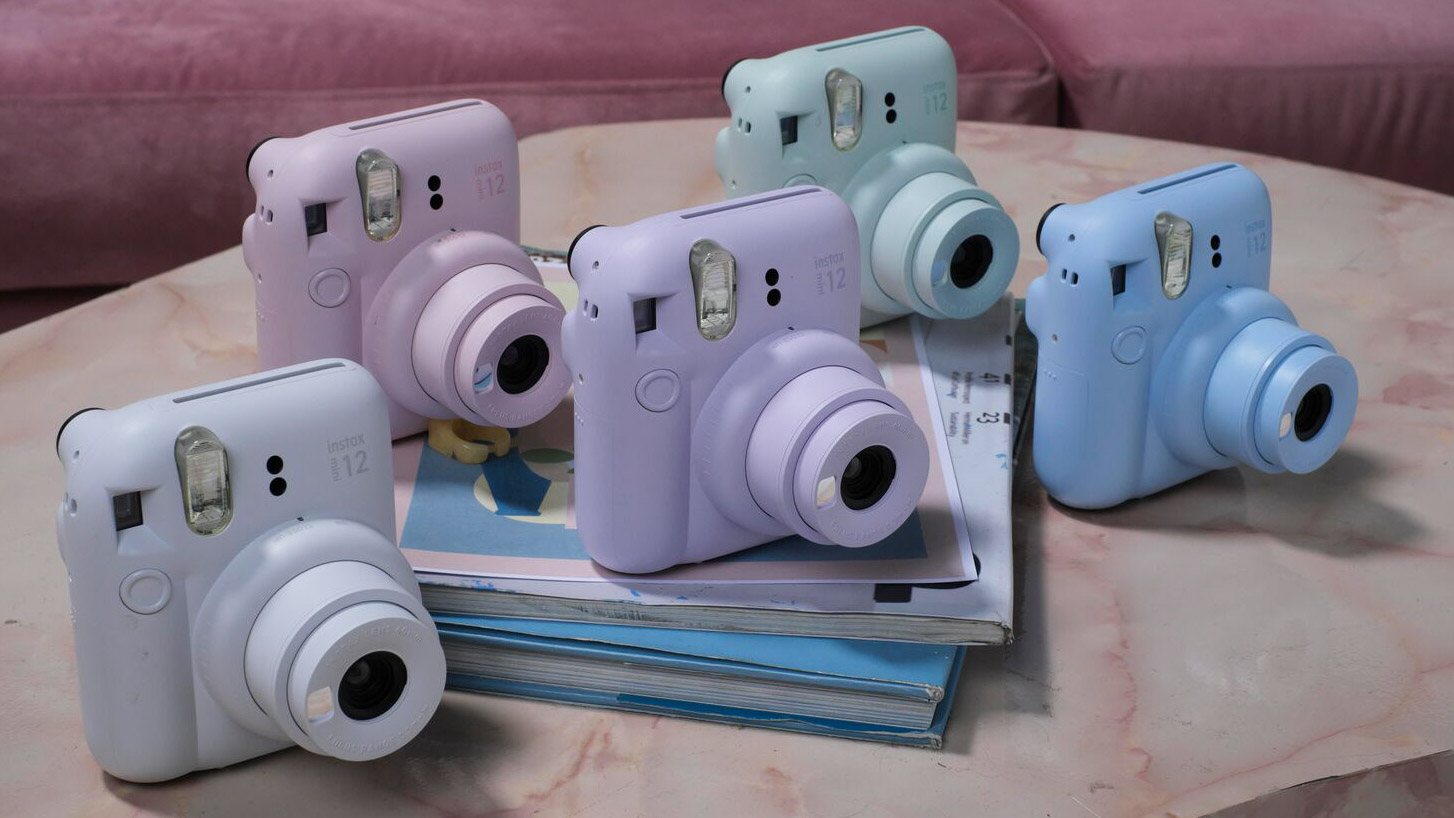
Take a look at the best instant cameras from all brands, in all shapes and sizes. You might also be interested in all the different instant camera film sizes, along with a comparison of Instax vs Polaroid cameras and prints.







